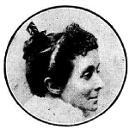Mary Hannay Foott emigrated to Australia from Glasgow, Scotland, with her family when she was seven. She was educated in Melbourne, became a teacher and taught for some years in Fitzroy and Brighton in Victoria. After resigning her last teaching position, she became one of the first students at the Melbourne National Gallery school, studying under Eugene von Guerard and Louis Buvelot. To support herself while studying, she contributed poems, articles and society notes to the Sydney Punch
and Melbourne Punch, The
Australasian Sketcher, The Australian Town and Country Journal
and The
Australasian.
In 1874, after her marriage to Thomas Wade Foott, son of James and Henrietta Foott, Foott lived in Bourke, News South Wales, for three years, until her husband took up land at Dundoo station on the Paroo River in south-western Queensland. One of her best known poems, 'Where the Pelican Builds' reflects her experiences on Dundoo. Following the death of her husband in 1884, she moved with her young sons to Toowoomba; she remained there until 1885 when she established a small private school in Rocklea, Brisbane, to support her family. During this time she also began to write for The
Queenslander and The
Brisbane Courier. In 1886 she joined the staff of The
Queenslander, writing poetry and articles on fashion, social events and items of interest to women, including interviewing Rosa Praed. She also wrote a column called 'The Housekeeper' under the name of La Quenouille. Foott was the full-time paid editor of the 'Women's Page' of The
Queenslander from 1886 -1896 and the first woman in Brisbane to earn her living as a professional writer.
Foott continued her literary career in Brisbane, becoming good friends with A. G. Stephens and also working with George Essex Evans. In 1885 and 1890 she published two books of poetry. Cecil Hadgraft describes her as 'probably our most musical poet of the bush'. Her play, 'More Than Kin', was performed at Government House, Brisbane, in 1891 and her children's play, Sweep, was published in booklet form .
In 1897 Foott returned to Victoria, resuming her teaching career at Trinity High School, Coburg, before taking up a position at the Grammar School, Wagga Wagga, in 1899. Some time after 1899 she moved to Townsville to live with her son, Cecil, later Brigadier-General Cecil Henry Foott, C. B., C. M. G. She relocated to Brisbane in 1901 after Cecil's marriage, moving eventually to Bundaberg where she worked as a governess to several daughters of prominent families and also taught painting.

 3093893691578368527.jpg
3093893691578368527.jpg